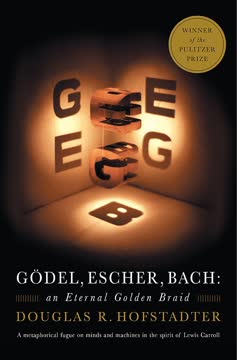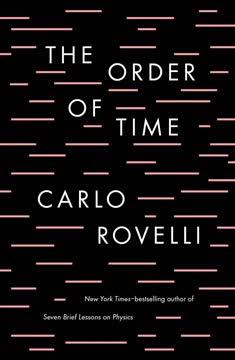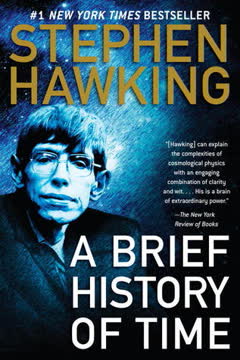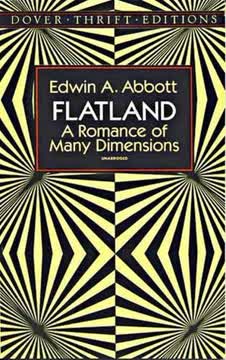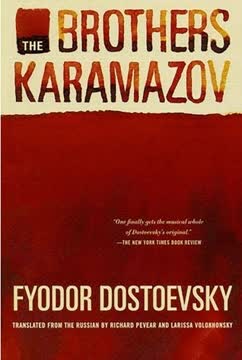Key Takeaways
1. The Fourth Dimension: A Gateway to Higher Reality
The fourth dimension is a universal skeleton key, applicable to any number of conundrums.
Beyond the Mundane. The fourth dimension, though intangible, offers a path to understanding a higher reality, transcending the struggles and limitations of everyday life. It's not merely a scientific concept but a philosophical and spiritual one, providing new perspectives on existence.
Multiple Interpretations. The fourth dimension can be understood in various ways: as time, as a hyperspace direction, or as a gateway to parallel universes. Each interpretation offers unique insights into the nature of reality and our place within it.
- Time as the fourth dimension: Emphasizes the interconnectedness of events across time.
- Hyperspace direction: Suggests the existence of spatial dimensions beyond our immediate perception.
- Gateway to parallel universes: Opens up the possibility of other realities coexisting with our own.
Infinite-Dimensional Space. At its deepest level, our world can be seen as a pattern within an infinite-dimensional space, where our minds and beings move like fish in water. This perspective challenges our conventional understanding of reality and invites us to explore the boundless possibilities beyond our immediate perception.
2. Flatland: An Analogy for Dimensional Understanding
4-D is to 3-D as 3-D is to 2-D.
Dimensional Hierarchy. Edwin Abbott Abbott's "Flatland" serves as a powerful analogy for understanding higher dimensions. By exploring the limitations of a two-dimensional world, we can gain insights into the challenges of comprehending the fourth dimension and beyond.
A Square's Journey. The story of A Square, a Flatland resident who encounters a three-dimensional sphere, illustrates the difficulty of grasping concepts beyond our immediate experience. His struggles mirror our own attempts to visualize and understand the fourth dimension.
- A Square's dream of Lineland: Highlights the limitations of a one-dimensional world.
- The Sphere's visit: Demonstrates the concept of higher-dimensional beings intersecting with lower-dimensional spaces.
Beyond Geometry. "Flatland" is not just a scientific exploration but also a social satire, critiquing the rigid hierarchies and limited perspectives of Victorian society. It reminds us that our understanding of reality is shaped by our cultural and social contexts.
3. Visualizing the Unseen: Perspectives from Hyperspace
At the deepest level, our world can be regarded as a pattern in infinite-dimensional space, a space in which we and our minds move like fish in water.
Hyperspace Vantage Point. Imagining our world from a four-dimensional perspective allows us to see it in its entirety, with all its hidden aspects revealed. Just as we can see the inside and outside of a Flatlander, a four-dimensional being could perceive every detail of our three-dimensional existence.
Connecting Interior Points. In four dimensions, it's possible to connect two points inside separate three-dimensional objects without piercing their surfaces. This concept challenges our intuitive understanding of spatial relationships and opens up new possibilities for thinking about connections between seemingly disparate entities.
The Hypersphere and Hypercube. The hypersphere, a four-dimensional analogue of the sphere, and the hypercube, also known as the tesseract, are two of the simpler four-dimensional shapes. Visualizing these shapes through cross-sections and analogies helps us develop a more intuitive understanding of higher-dimensional geometry.
- Hypersphere: A series of spheres that grow smaller as one moves ana or kata from the space where the center lies.
- Hypercube: The "trail" of a cube moving in four-dimensional space, consisting of eight cubical sides.
4. Mirror Images and Dimensional Twists
The fourth dimension is a direction different from all the directions in normal space.
Kant's Hand and Chirality. Immanuel Kant's puzzle about the single human hand in empty space highlights the concept of chirality, or handedness. In four dimensions, a left hand can be transformed into a right hand through a rotation, demonstrating the relativity of spatial orientation.
Turning Over in Hyperspace. A four-dimensional being could turn you into your own mirror image by rotating you in hyperspace. This concept challenges our understanding of identity and the nature of physical objects.
Necker Cube Reversal. The Necker cube illusion provides a visual representation of a four-dimensional rotation. The mind's ability to switch between two mirror-image interpretations of the cube mimics the process of turning an object over in hyperspace.
- The two possible 3-D interpretations of the Necker cube are mirror images of each other.
- The twinkling rearrangement that takes place when a Necker cube reverses is equivalent to a rotation through the fourth dimension.
5. Spirits, Dimensions, and the Search for Meaning
At the deepest level, our world can be regarded as a pattern in infinite-dimensional space, a space in which we and our minds move like fish in water.
Spiritualism and the Fourth Dimension. In the late 19th century, spiritualists sought to explain paranormal phenomena by invoking the fourth dimension. They proposed that spirits resided in hyperspace, allowing them to interact with our world in ways that defied conventional physics.
Zöllner's Experiments. Johann Carl Friedrich Zöllner attempted to scientifically prove the existence of four-dimensional spirits through experiments with the medium Henry Slade. Although his experiments were ultimately discredited, they popularized the idea of spirits inhabiting higher dimensions.
Beyond Materialism. The idea of spirits as literal chunks of hypermatter in four-dimensional space is overly simplistic. A more nuanced view suggests that our souls are patterns in infinite-dimensional Hilbert space, and that the concept of separately acting individuals may fall away at higher levels of reality.
- The fourth dimension is not only a spatial concept but a type of consciousness, an awareness of greater complexities and higher unities.
- The teachings of mysticism: All is One and The One is Unknowable.
6. Space as a Medium: Curvature and Connection
It is inconceivable that inanimate brute matter should, without the mediation of something else which is not material, operate upon and affect other matter without mutual contact.
The Aether Revisited. The concept of a space-filling aether, once discarded, finds new relevance in modern physics. Einstein's general theory of relativity suggests that space itself is a medium that can be curved and distorted by matter and energy.
Matter Curves Space. According to general relativity, matter and energy distort space, and these distortions affect the motion of matter and energy. Gravity is not a force acting across empty space but a consequence of the curvature of spacetime.
Geometrodynamics. William K. Clifford proposed that matter is not a separate entity but rather a manifestation of curved space. This idea, known as geometrodynamics, suggests that the universe is ultimately composed of pure geometry.
- Matter is a bump in space.
- Space is an aether, a continuous substance that is curved in higher dimensions.
7. The Shape of Space: Finite, Infinite, and Beyond
We conclude, therefore, that a higher world than ours is not only conceivably possible, but probable; secondly, that such a world may be considered as a world of four dimensions; and thirdly, that the spiritual world agrees largely in its mysterious laws, in its language which is foolishness to us, in its miraculous appearances and interpositions, in its high and lofty claims of omniscience, omnividence, etc., and in other particulars, with what by analogy would be the laws, language, and claims of a fourth dimension …
Cosmology and the Universe's Shape. Cosmology explores the large-scale structure and evolution of the universe. One of its central questions is: What is the shape of space? Is it flat, curved, finite, or infinite?
Unboundedness vs. Infinite Extent. While space is generally considered unbounded, meaning it has no edges, it may not necessarily be infinite in extent. Bernhard Riemann suggested that space could be finite and unbounded if it has a constant positive curvature.
Three Possibilities for Space's Shape:
- Flat (homaloidal) space: Extends infinitely in all directions.
- Hyperspherical space: Finite and unbounded, like the surface of a hypersphere.
- Hyperbolic space: Infinite and negatively curved, with a geometry more complex than flat or hyperspherical space.
8. Magic Doors: Hyperspace Tunnels and Alternate Universes
The fourth dimension is essentially a modern idea, dating back not much further than the midnineteenth century.
Einstein-Rosen Bridges. Magic doors, or Einstein-Rosen bridges (also known as wormholes), are theoretical tunnels through hyperspace that connect different regions of spacetime. These bridges could potentially allow for faster-than-light travel or travel to alternate universes.
A Square's Adventures in Globland. A Square's journey through a hyperspace tunnel to Globland illustrates the concept of connecting different universes through higher dimensions. The tunnel appears as a lens-like window that compresses the destination universe into a disk.
The Shape of a Wormhole. The entrance to a wormhole would look like a sphere containing a shrunken and distorted image of another universe. Diving into this sphere would transport you to the other side.
- Steven Spielberg's movie Poltergeist: Balls that are thrown into the closet of one room appear from the ceiling of another room … indicating a route through the fourth dimension!
9. Spacetime: The Illusion of Time's Passage
If the fourth dimension exists, one of two things is possible. Either we ourselves possess the fourth dimension, i.e., are beings of four dimensions, or we possess only three dimensions and in that case do not exist at all.
The Block Universe. The concept of the block universe challenges our perception of time as a linear progression. It suggests that all of space and time exist simultaneously as a single, unchanging four-dimensional entity.
The Illusion of Change. The feeling that time is passing is an illusion, a product of our limited perspective as beings embedded within spacetime. Change is unreal, and the past, present, and future all exist equally.
Ouspensky's View. If the fourth dimension exists, one of two things is possible. Either we ourselves possess the fourth dimension, i.e., are beings of four dimensions, or we possess only three dimensions and in that case do not exist at all.
10. Time Travel, Telepathy, and the Limits of Control
The remarkable thing was that the definite endeavor to see the one thing made me see the other.
The Paradoxes of Time Travel. Time travel, while a popular theme in science fiction, raises serious logical paradoxes. These paradoxes, such as the grandfather paradox, challenge the consistency of reality and lead many scientists to reject the possibility of time travel.
The Relativity of Simultaneity. Einstein's theory of special relativity introduces the concept of the relativity of simultaneity, which states that events that appear simultaneous to one observer may not be simultaneous to another observer in relative motion. This concept has profound implications for our understanding of time and causality.
Synchronicity vs. Telepathy. Synchronicity, or meaningful coincidence, is a phenomenon that challenges our understanding of cause and effect. While it may seem to suggest psychic abilities like telepathy, it is more accurately understood as a noncausal connection between events.
- Telepathy: Suggests the idea of being able to exert control over coincidences.
- Synchronicity: A fact of life.
11. Reality as Perception: A World of Infinite Dimensions
The true apprehension and worship of space lies in the grasp of varied details of shape and form, all of which, in their exactness and precision, pass into the one great apprehension.
Beyond the Senses. The traditional scientific approach seeks to explain our mental experiences in terms of material objects arranged in three-dimensional space. However, a more radical approach takes our actual thoughts and sensations as the truly fundamental entities.
Fact-Space. We can construct a model of reality based on the notion that all that exists is the perceptions of various observers. This model involves a space called fact-space, which has as many dimensions as there are possible properties or distinctions.
The Infinite-Dimensional One. Our world is a pattern in an infinite-dimensional fact-space. This perspective challenges our conventional understanding of reality and invites us to explore the boundless possibilities beyond our immediate perception.
- The One is Unknowable.
- All is One.
Last updated:
Review Summary
The Fourth Dimension receives mostly positive reviews, praised for its accessible explanation of complex mathematical concepts and engaging writing style. Readers appreciate Rucker's ability to make higher dimensions comprehensible, though some find the structure and tangential topics distracting. Many recommend reading "Flatland" beforehand, as it's frequently referenced. The book is commended for its thought-provoking ideas, illustrations, and puzzles. While some find it outdated, others consider it a mind-expanding exploration of spatial dimensions and their implications for reality and perception.
Similar Books
Download PDF
Download EPUB
.epub digital book format is ideal for reading ebooks on phones, tablets, and e-readers.


